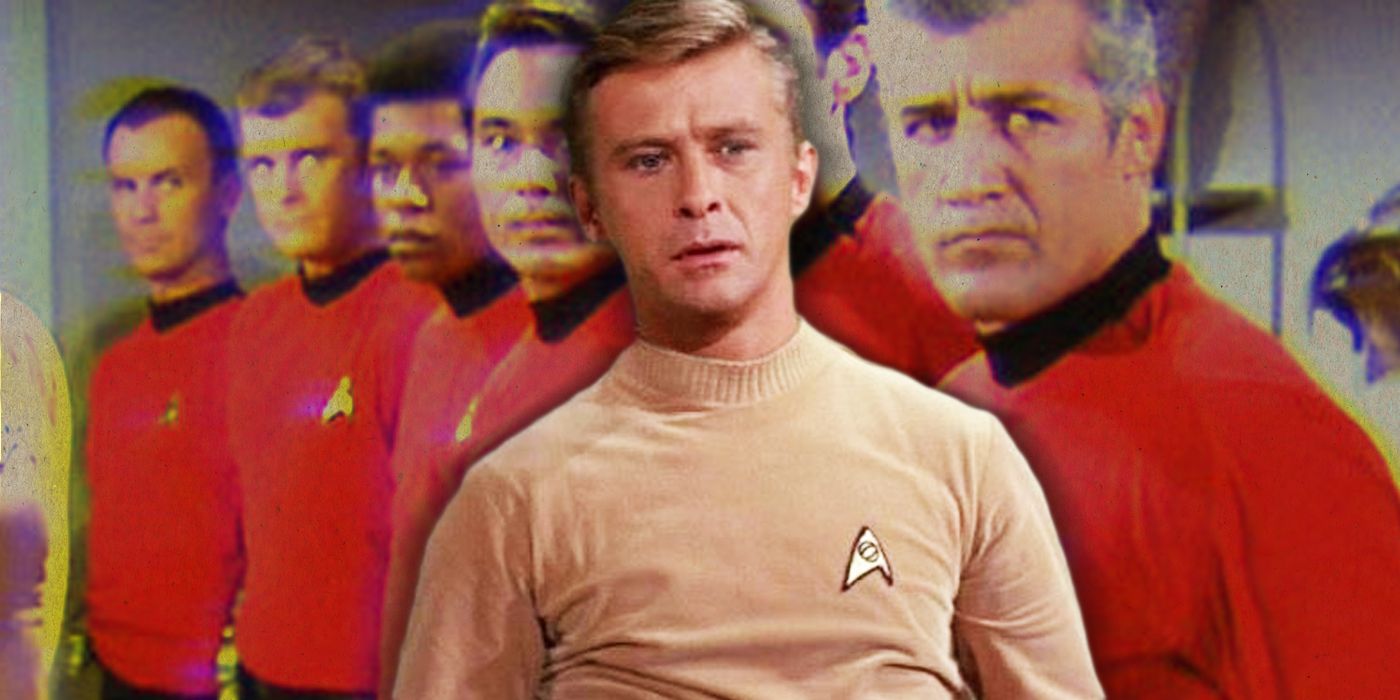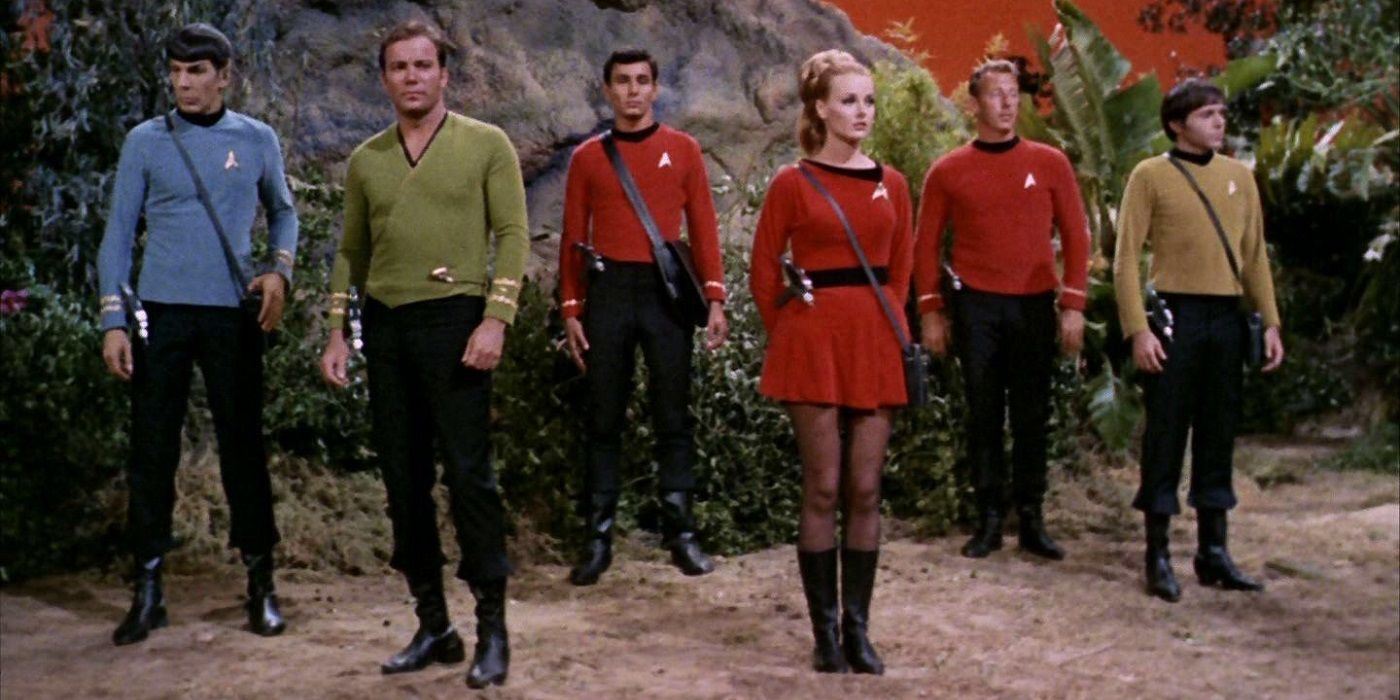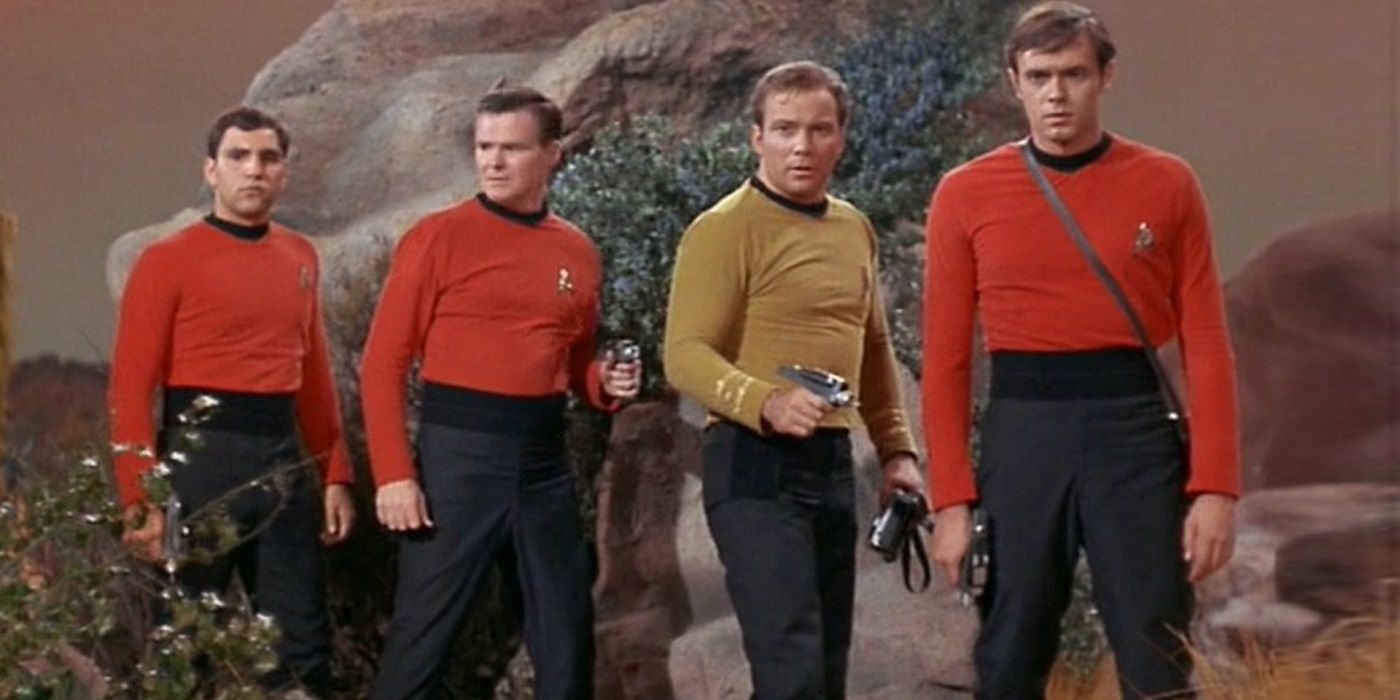Redshirts -- anonymous Star Trek crew members who always seemed to die so that the series regulars might live -- didn’t develop overnight. The trope started as an in-joke among hard-core Star Trek fans, who noticed that the preponderance of these crewmen wore red shirts. The fan joke turned into a trend, then a trope, and now it is a signature part of Star Trek's universe.
It was an inadvertent side effect of The Original Series' process of world-building, and it didn't become apparent until later in the show's run. That leaves the origins of the term a little muddied. Not to mention the question of who the first redshirt was and how they died. It depends on how the term is defined and the way it applies to Star Trek. Thankfully, the candidates and their respective demises aren’t difficult to chart.
Redshirts are loosely defined as characters specifically created to be killed to demonstrate the nature or intensity as a threat. Such characters never last more than a single episode, and series regulars don’t mention them once they’re gone. The term stems from the preponderance of crewmen fitting the description who wore red uniforms instead of yellow or blue ones.
This was largely for in-universe reasons. In The Original Series, security and engineering personnel wore red uniforms. Since they faced the greatest dangers and hazards, they suffered the highest casualties. 26 red-shirted extras were killed in the series compared to seven characters wearing blue shirts and eight wearing yellow. Not every character killed in the classic “redshirt” manner wore a red shirt in The Original Series. Indeed, crewmen wearing red shirts weren’t killed any more or less often than any other crewmen in the series’ first season. Only four literal red shirts were killed in Season 1, compared to four blue shirts and seven yellow shirts. The other 22 died in Seasons 2 and 3, meaning that the trope didn’t really get started until later in Star Trek’s run.
All of this leads to four distinct answers to who the first Star Trek redshirt was and, thus, how they died. The most straightforward answer is Lieutenant Lee Kelso in the show’s pilot, “Where No Man Has Gone Before.” He served as the ship’s navigator and was strangled by helmsman Gary Mitchell under the influence of the strange energies of the galactic barrier. Kelso served in the ship’s operations division. While the uniforms in the pilot were less distinctive than they became on the regular series, it qualifies him as the first redshirt.
The pilot, however, features several incongruities with the show’s eventual incarnation. As the originating show, any characters' death blurs the distinction between a redshirt and a more developed supporting cast member. Without previous context, it’s hard to differentiate Kelso from Mitchell, who was not a redshirt as the episode’s antagonist.
Jumping forward into the regular series clarifies matters somewhat. Season 1, Episode 5, “The Man Trap,” featured Crewman Darnell, a medical assistant who beams down to the planet’s surface with Kirk and McCoy. Although the three of them appear while Kirk’s voiceover explains their mission, it doesn’t mention Darnell, only McCoy. The salt vampire murders Darnell before the opening credits, confirming the first redshirt's birth. The only difficulty is that Darnell’s uniform is blue, not red, making him a symbolic rather than literal redshirt.
That comes in Season 1, Episode 9, “What Are Little Girls Made Of?” when two security officers -- Matthews and Rayburn -- beam down with the away team and are murdered by the planet’s resident android. Matthews is dispatched first in the order, but his death takes place offscreen, while Rayburn is the first of them killed in full view of the audience.
The question of who came first is further muddled by the release date since “The Man Trap” aired before “Where No Man Has Gone Before,” despite being produced later. Syndication compounded the matter, meaning that many of Star Trek's early fans couldn't be sure which redshirt was first. It’s indicative of the strange way Star Trek developed and how its universe was refined slowly over time, reflecting the unvarnished nature of the series in its early days.



